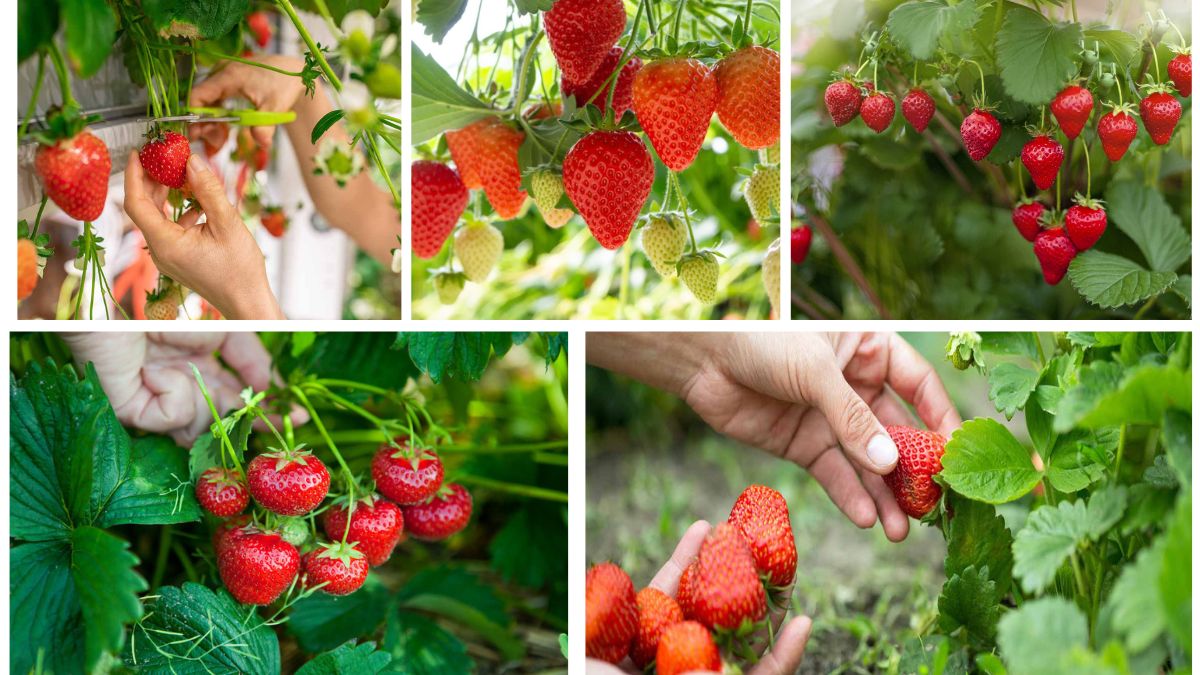Strawberries are one of the most loved fruits across the world. Their sweet, juicy taste and versatility make them a delightful addition to gardens, patios, and even small balcony spaces. Growing your own strawberries not only ensures a steady supply of fresh fruit but also offers the satisfaction of cultivating something healthy and delicious right at home.
This step-by-step guide will walk you through everything you need to know about how to grow strawberries successfully, from selecting the right variety to planting, caring, and harvesting for maximum yields.
Understanding Strawberry Plants
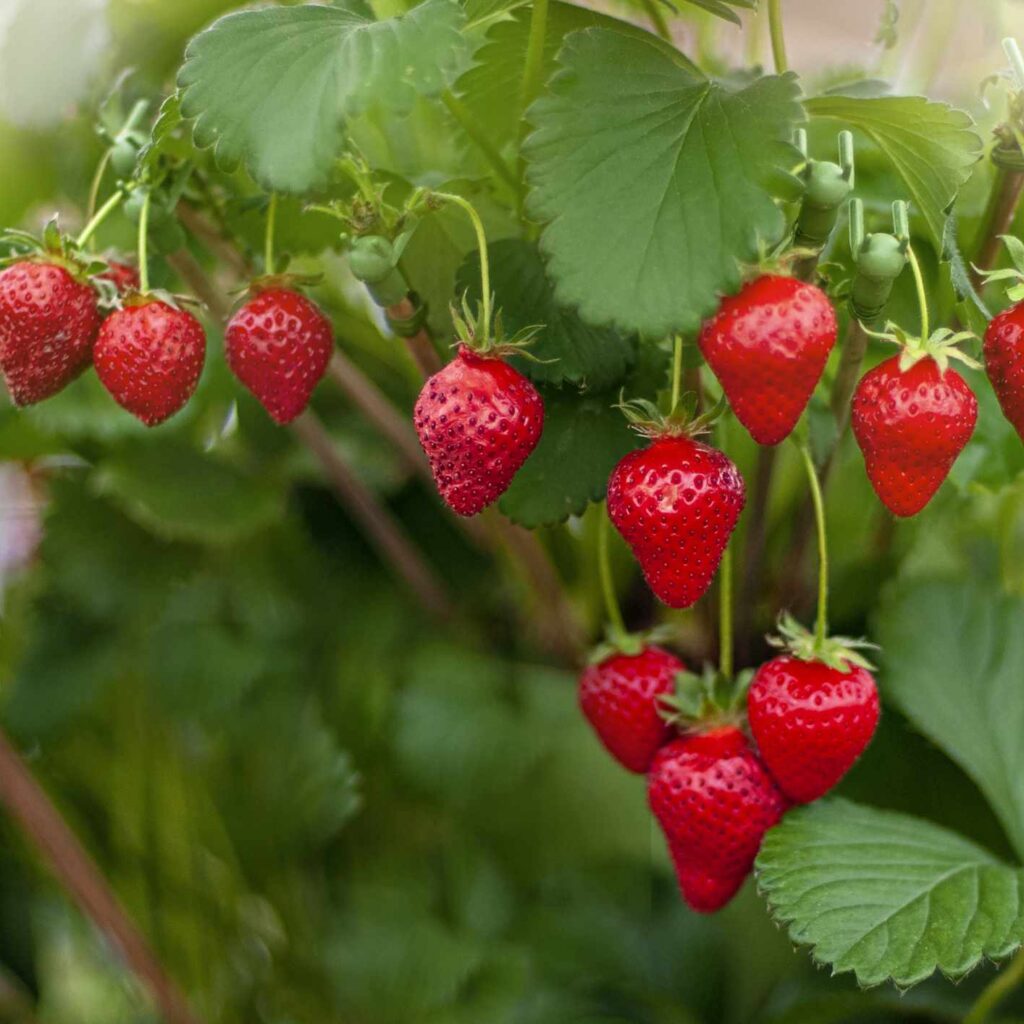
Strawberries (Fragaria × ananassa) are perennial plants that produce fruit from spring through early summer, depending on the variety. They grow low to the ground, with runners (stolons) that spread and produce new plants. With proper care, strawberry plants can produce fruit for 3–5 years.
There are three main types of strawberry plants:
- June-Bearing Strawberries – Produce a large crop once a year in late spring to early summer. They’re perfect for gardeners who want a big harvest for freezing or making jams.
- Ever-Bearing Strawberries – Produce two to three smaller harvests during spring, summer, and fall.
- Day-Neutral Strawberries – Produce fruit continuously throughout the growing season, as long as conditions are favorable.
Choosing the right type depends on your space, needs, and growing climate.
Step 1: Choosing the Right Location
Strawberries thrive in areas with:

- Full Sunlight: At least 6–8 hours of direct sunlight daily. More sunlight equals sweeter berries.
- Well-Draining Soil: Strawberries hate wet feet. Raised beds or containers are ideal if your garden soil retains too much water.
- pH Range: Slightly acidic soil between 5.5 and 6.8 is optimal. A simple soil test kit can help you adjust conditions before planting.
Tip: Avoid planting strawberries in spots where tomatoes, peppers, eggplants, or potatoes were previously grown. These crops can leave behind soil-borne diseases harmful to strawberries.
Step 2: Preparing the Soil
Healthy soil is key to a sweet harvest.
- Loosen the soil to a depth of 12–15 inches.
- Add plenty of organic compost or well-rotted manure for nutrients.
- Mix in sand or perlite if your soil is heavy, improving drainage.
- Rake the bed to create a smooth, slightly raised surface.
A raised bed or mound ensures good airflow and keeps the roots healthy.
Step 3: Planting Strawberries
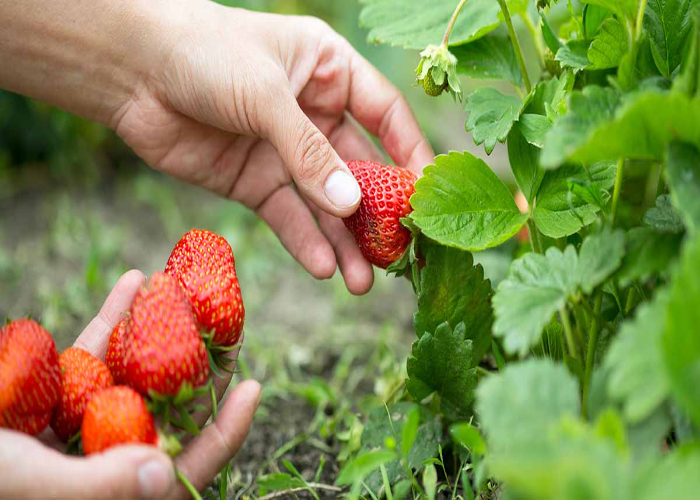
You can grow strawberries from bare-root plants, crowns, or transplants purchased from nurseries.
When to Plant:
- In spring (after frost) in cooler regions.
- In fall in mild climates, giving plants time to establish before summer fruiting.
How to Plant:
- Dig a hole wide enough for the roots.
- Spread the roots gently into the soil.
- Place the crown (where leaves emerge) at soil level—never buried or raised too high.
- Space plants 12–18 inches apart, with rows 2–3 feet apart. This spacing gives runners room to spread.
For containers, choose a wide, shallow pot with drainage holes and plant 2–3 strawberry plants per container.
Step 4: Watering and Mulching
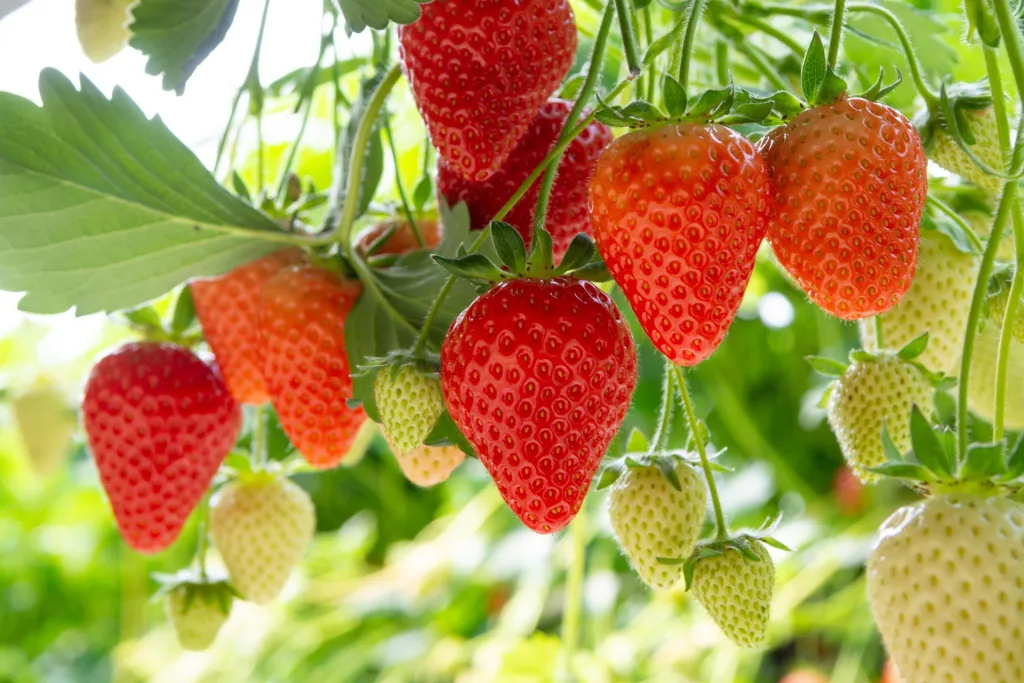
Strawberries need consistent moisture, especially during flowering and fruiting.
- Watering: Provide 1–1.5 inches of water per week, ideally through drip irrigation or a soaker hose to avoid wetting leaves and fruit.
- Mulching: Spread a layer of straw, pine needles, or shredded leaves around plants. Mulch conserves moisture, suppresses weeds, and prevents fruits from rotting on damp soil.
Step 5: Fertilizing Strawberries
Strawberries are heavy feeders. For best results:
- Before planting, enrich soil with compost or a balanced fertilizer (10-10-10).
- During the growing season, apply a high-potassium fertilizer every 4–6 weeks.
- Avoid excessive nitrogen, which encourages leafy growth but reduces fruiting.
Step 6: Managing Runners
Strawberry plants send out runners that produce baby plants.
- For larger fruit harvests, pinch off runners so the plant’s energy goes into producing strawberries.
- For more plants, allow runners to root and establish, then transplant them.
Balance between fruiting and propagating depends on your garden goals.
Step 7: Protecting Against Pests and Diseases
Strawberries are susceptible to pests and fungal diseases. Common issues include:
- Slugs and Snails: Attracted to ripe berries. Use copper tape, diatomaceous earth, or natural predators like ducks.
- Aphids: Suck plant sap, weakening growth. Spray with insecticidal soap.
- Powdery Mildew & Leaf Spot: Fungal infections caused by excess moisture. Ensure good spacing and airflow, and avoid overhead watering.
- Birds: Love strawberries as much as humans! Use bird netting or row covers to protect your crop.
Step 8: Harvesting Strawberries
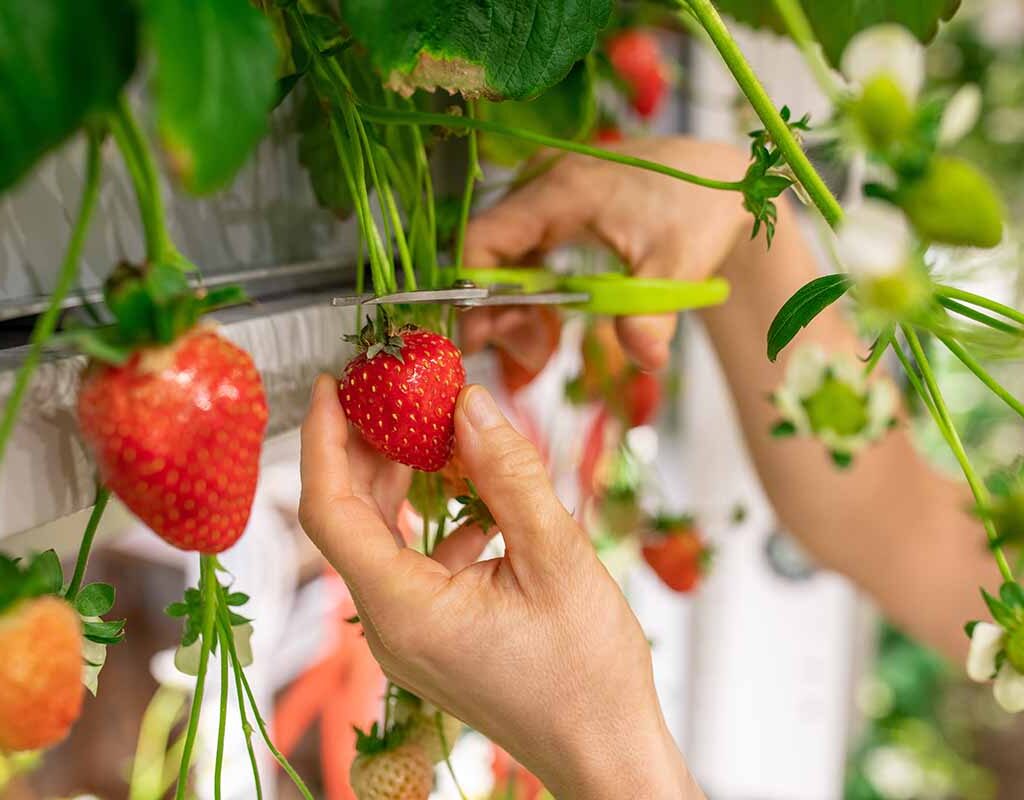
Strawberries usually start producing fruit 4–6 weeks after flowering.
- Pick when fully red: Strawberries don’t ripen after harvest.
- Harvest in the morning: Fruits are firmer and sweeter in cooler hours.
- Handle gently: They bruise easily, so twist the stem instead of pulling the berry.
A healthy strawberry bed can yield a steady harvest for 3–5 years before productivity declines. After that, consider replanting in a fresh location.
Step 9: Storing and Using Fresh Strawberries
- Eat fresh strawberries within 2–3 days for the best flavor.
- Store unwashed berries in the refrigerator in a breathable container.
- Freeze extras by hulling and spreading them on a baking sheet before transferring to freezer bags.
Strawberries can also be turned into jams, sauces, smoothies, or dried for long-term storage.
Additional Tips for Successful Strawberry Growing
- Rotate crops: Avoid planting strawberries in the same bed for more than 3 years to reduce soil-borne diseases.
- Winter care: In cold regions, protect plants with straw mulch or row covers during frost.
- Container success: Day-neutral varieties are best for pots, producing fruit all season.
- Pollination boost: While strawberries self-pollinate, nearby pollinator-friendly flowers attract bees that increase yields.
Conclusion
Growing strawberries at home is both rewarding and practical. With proper care—choosing the right variety, preparing nutrient-rich soil, watering consistently, and managing pests—you can enjoy baskets of fresh, sweet strawberries straight from your garden. Whether you’re planting them in garden beds, containers, or hanging baskets, strawberries are adaptable and easy enough even for beginners.
By following this guide, you’ll not only ensure healthy growth but also maximize harvests, making your garden more fruitful and your kitchen always stocked with one of nature’s sweetest treats.
